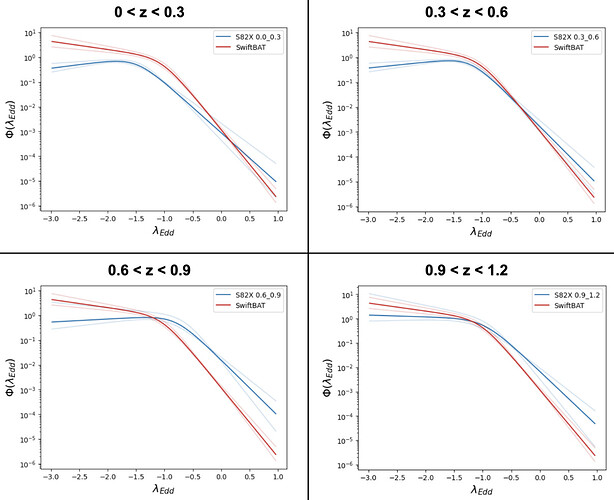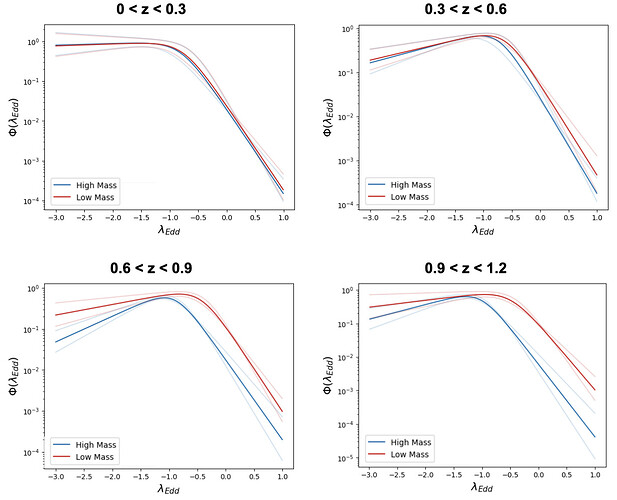Author: Md Mahmudunnobe, Tonima Tasnim Ananna
(Wayne State University, Detroit, Michigan)
Abstract:
Supermassive black holes (SMBH) lie at the heart of nearly every large galaxy, and their appearance varies greatly depending on their properties, our point of view, or a combination of these two factors. Because of our incomplete understanding of how matter is distributed around these black holes, it is unclear which factor dominates in regulating this matter. Previous work indicates that the factor that regulates the distribution of matter around SMBH is its accretion rate, at least in the local Universe. We are extending this work further back in time to see if the scenario is consistent throughout the evolutionary history of SMBH. Specifically, we used a sample of 998 X-ray-selected SMBH from the Stripe82X survey, for which we obtained the spectroscopic masses and the obscuring column densities. Then, using Bayesian Markov Chain Monte Carlo (MCMC) model, we estimate the distribution function for accretion rates, black hole masses, and X-ray luminosities of unobscured SMBH in the last 10 billion years (redshift up to 2).
Motivation:
We want to study how the mass and accretion rate of SMBHs evolve over time. Eddington Ratio (i.e. accretion rate, $\lambda_{Edd}$) Distribution Function (ERDF) for the local universe (z < 0.2) shows a higher unobscured SMBH population at high $\lambda_{Edd}$. This suggests high $\lambda_{Edd}$ region could be a transition phase between obscured and unobscured. Does this trend hold in the earlier universe?
Method Overview:
We selected 998 unobscured SMBHs for which we know their mass, \lambda_{Edd}, redshift, and obscuration. We assumed broken power law parametric forms for the ERDF, then constrained the function parameters using MCMC with 64 walkers and 500 steps. The likelihood function incorporates the intrinsic distributions, survey selection functions, obscuration effects, and convolved measurement uncertainties. For the mass independence test, we split the AGN sample of each redshift bin based on the median mass.
Results: ERDF evolution
The breaking point value seems to increase with redshift, from -1.5 to -1.0 for log $\lambda_{Edd}$, and from while going to a redshift of 1.2. Another noticeable feature is that the slope for the upper end of the ERDF gets shallower with redshift, suggesting AGN downsizing.
Results: Mass Dependence of ERDF
Both high and low mass SMBH at local universe show similar accretion. But the earlier we go, low mass population grows faster with larger accretion rate, suggesting a possible difference in origin.
Contact: Please share your feedback or ask any questions here or in slack or email at mahmud.nobe@wayne.edu.

